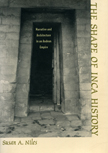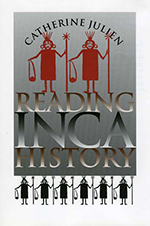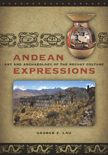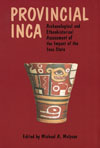The Shape of Inca History
“Niles has produced a major work on the Incas, eagerly awaited by a number of us who know the kind of careful fieldwork and attention to scholarship she brings to her studies. Only she could do a book like this one, and it demonstrates her solid expertise in both archaeology and folklore.”—Catherine Julien, Western Michigan University
“This finely crafted volume demonstrates the importance of historical change and political context in the analysis of Inca architecture. Through a detailed study of the royal estate of Huayna Capac, Niles is able to achieve an new level of understanding of the architecture's significance within the sociopolitical context of this late Inca ruler and in doing so, she reveals the limitations of earlier normative accounts of Inca constructions. Her linkage of Inca narrative tradition with the search for architectural meaning provides an original and intellectually satisfying volume which should not be missed by those interested in Prehispanic America or in the analysis of ancient architecture.”—Richard L. Burger, director, Peabody Museum of Natural History and professor of anthropology
“Susan Niles puts forward a masterful vision of the way that Inca royalty used architecture and narrative to create legitimacy for their rule…This volume is essential reading for those interested in the Inca. It will also be fascinating reading for anyone with an interest in how pre-Columbian societies thought about architectural design, landscapes, and history.”—Historical Geography
In The Shape of Inca History, Susan Niles considers the ways in which the Inca concept of history informed their narratives, rituals, and architecture. Using sixteenth-century chronicles of Inca culture, legal documents from the first generation of conquest, and field investigation of architectural remains, she strategically explores the interplay of oral and written histories with the architectural record and provides a new and exciting understanding of the lives of the royal families on the eve of conquest.
Niles focuses on the life of Huayna Capac, the Inca king who ruled at the time of the first European incursions on the Andean coast. Because he died just a few years before the Spaniards overturned the Inca world, eyewitness accounts of his deeds as recorded by the invaders can be used to separate fact from propaganda. The rich documentary sources telling of his life include extraordinarily detailed legal records that inventory lands on his estate in the Yucay Valley. These sources provide a basis—unique in the Andes—for reconstructing the social and physical plan of the estate and for dating its construction exactly.
Huayna Capac's country palace shows a design different from that devised by his ancestors. Niles argues that the radical stylistic and technical innovations documented in the buildings themselves can be understood by referring to the turbulent political atmosphere prevalent at the time of his accession. Illustrated with numerous photographs and reconstruction drawings, The Shape of Inca History breaks new ground by proposing that Inca royal style was dynamic and that the design of an Inca building can best be interpreted by its historical context. In this way it is possible to recreate the development of Inca architectural style over time.






